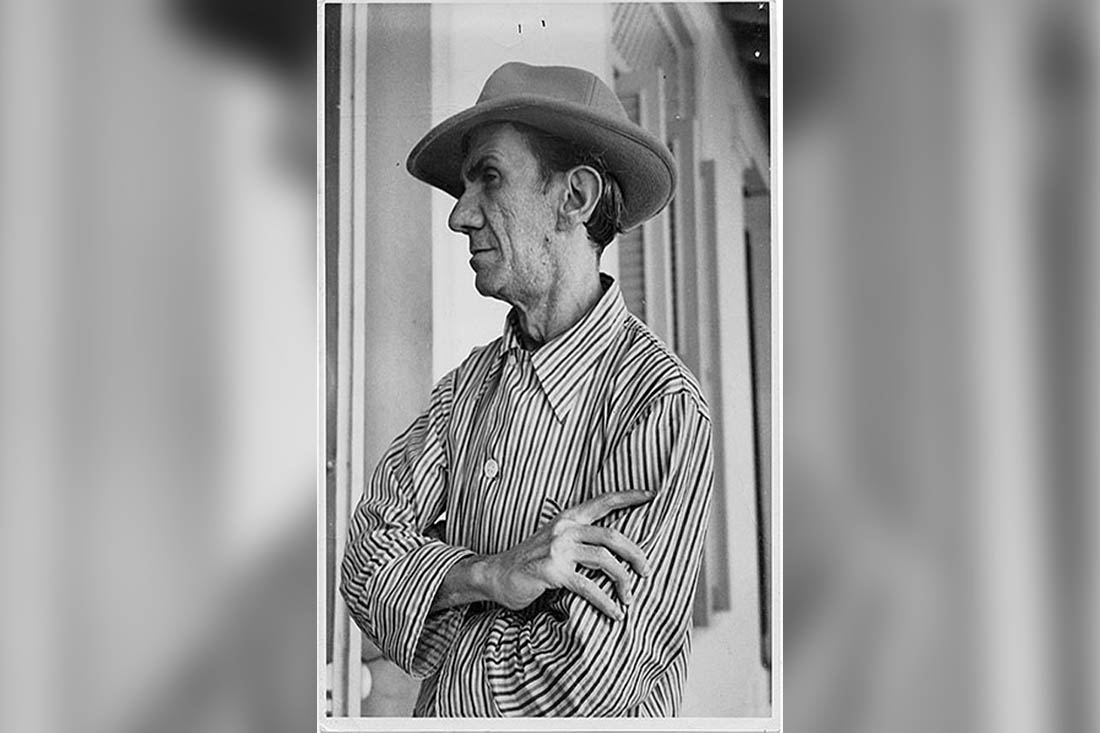The last days of January are witnesses of the birth of one of the most relevant men of Camagüey in terms of culture and, at the same time, one of the most controversial painters of all Cuban plastic arts. Alfredo Fuentes Pons was born on January 28th, 1895, although there are some bibliographies that disagree with the date and cite January 24th. By his official name, few people will know what personality is being talked about, but if Fidelio Ponce de León is said instead, there will be many who will be able to talk about his artistic career.
Ponce traveled to Havana in 1915 and began his studies at the San Alejandro Academy of Plastic Arts. Studies that he would never finish for dissimilar reasons, ranging from an Academy that no longer adjusted to the artistic needs of his generation, to his own style of life that asked for other types of freedoms.
His generation
Fidelio Ponce together with Marcelo Pogolotti, Carlos René, Amelia Peláez, Eduardo Abela, Víctor Manuel García, formed the squad that renewed Cuban art with force and grace, in the twenties of the 20th century. The movement and transformation of world art had a decisive influence on this generation, in addition to an art academy that was crying out for a fresh start.
His position against academicism never influenced the respect he felt for his professors and for the artists who defended this aesthetic. His intention was always to know himself. He constantly translated, through his works, the journeys he made within himself. His paintings were stylized and wrapped in that mist, which characterized him; more than human figures, they looked like expectant souls that wandered in spaces other than ours. He managed to make a difference in various aspects of his art; in his theme, he once again distances himself from his fellow countrymen painting devout and eighteenth-century ladies in the middle of the 20th century.
His creation
In an article by Josefina Ortega published in La Jiribilla, she documents an opinion of Ponce about his own creation:
“(…) In my early days of evolution I made elongated figures as El Greco and Modigliani did, but the latter is strongly inspired by black art, while I, to create, look towards my inner world (…) If sometimes my painting has been similar to others –no so sure about that- it is pure coincidence, because I have always tried to be Ponce and not a simple satellite.”
His paintings dialogue with a more sophisticated language than that of critics and the public of his time, perhaps that is where the essence of his genius lies: they are works that speak with the future. He was a man ahead of his time; he wanted to undress from the past, but he didn’t feel like dressing up from the present that surrounded him either, only his own suits suited him.
He moves away from all the intention of color moving between whites and ochres, achieving a harmony in the chromaticism. In his paintings, drawing and color functioned as a unit that was separated only when conceptually necessary. A visible palette that spoke of its slight influences from French expressionism.
Carmen Paula Bermúdez in her article La Celosía. Miradas a la pintura de Fidelio Ponce, she categorizes his work as:… a game of the erotic-conceptual: erotic because it seduces with what is in plain sight; conceptual because he challenges to understand (with a sharp eye) the strategy of the disguise.
Fidelio painted all the time like an artist possessed, but his work was never well paid, in the contrary. When he leaves San Alejandro, he moves to small towns in Havana where he paints shop signs and teaches painting classes to support his most immediate needs, which were always related to alcohol. His alcoholism and his tuberculosis led him down a path of vice and a bad life. He immersed himself in a process of madness where he made trips to different countries and met great artists and was wildly recognized, things that never happened.
Fidelio was embraced by illness, ruin, misery and madness. Many of his acquaintances alluded to his deplorable physical appearance, he was the personification of oblivion. Distant during his life from all kinds of recognition and glory. With a work that is based on paradox. Another of the great men from Camagüey, Nicolás Guillén, expresses himself in this way when speaking of Ponce:
“(…) Ponce, with the distressing technique, tight on him; with his oversized canvases in which there is never a single conception of tropical ease and in which the figures dramatically obtain from the artist nothing more than essential elements to peek into life- long, ivory shadows, deep shadows, born of the shadow, tortured shadows, that seem to escape like a thin column of smoke.”
Bibliography
Marinello, Juan. 1983. Comentarios al arte. Editorial Letras Cubanas. La Habana.
Rigol, Jorge. 1989. Apuntes sobre la pintura y el grabado en Cuba. Editorial Pueblo y Educación. La Habana.
Sánchez, Juan. 1985. Fidelio Ponce. Editorial Letras Cubanas. La Habana.
Translated by: Aileen Álvarez García






